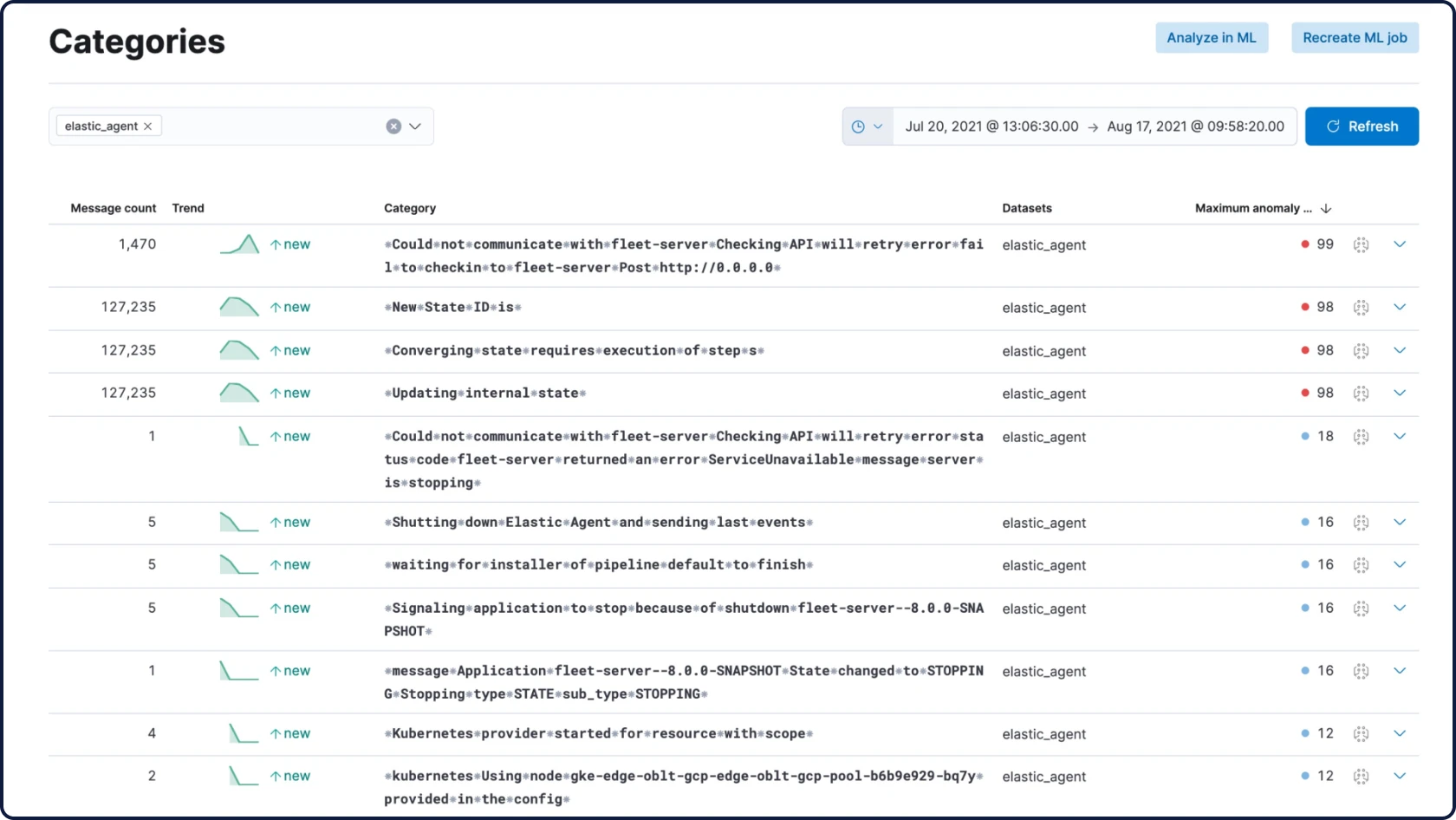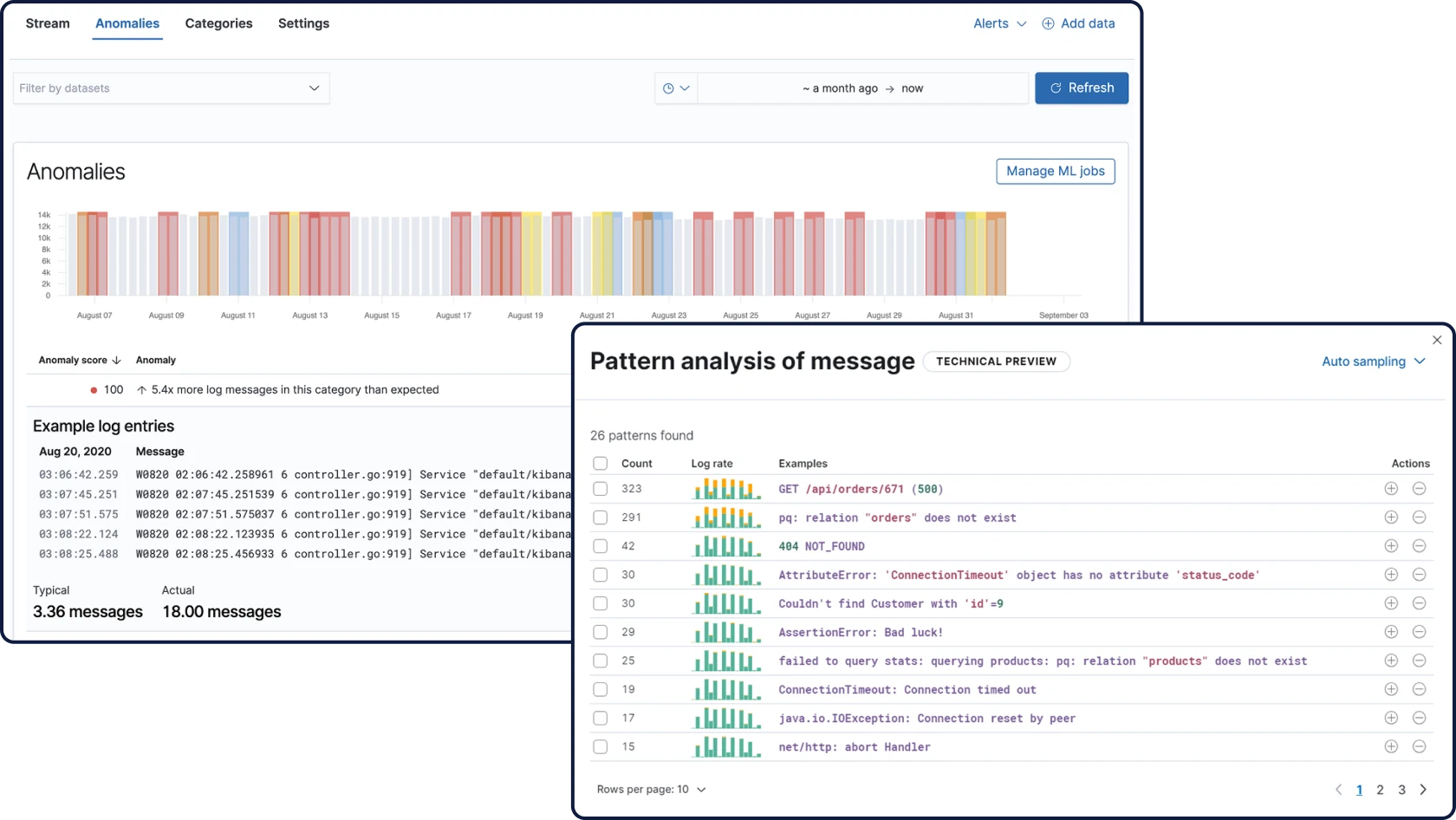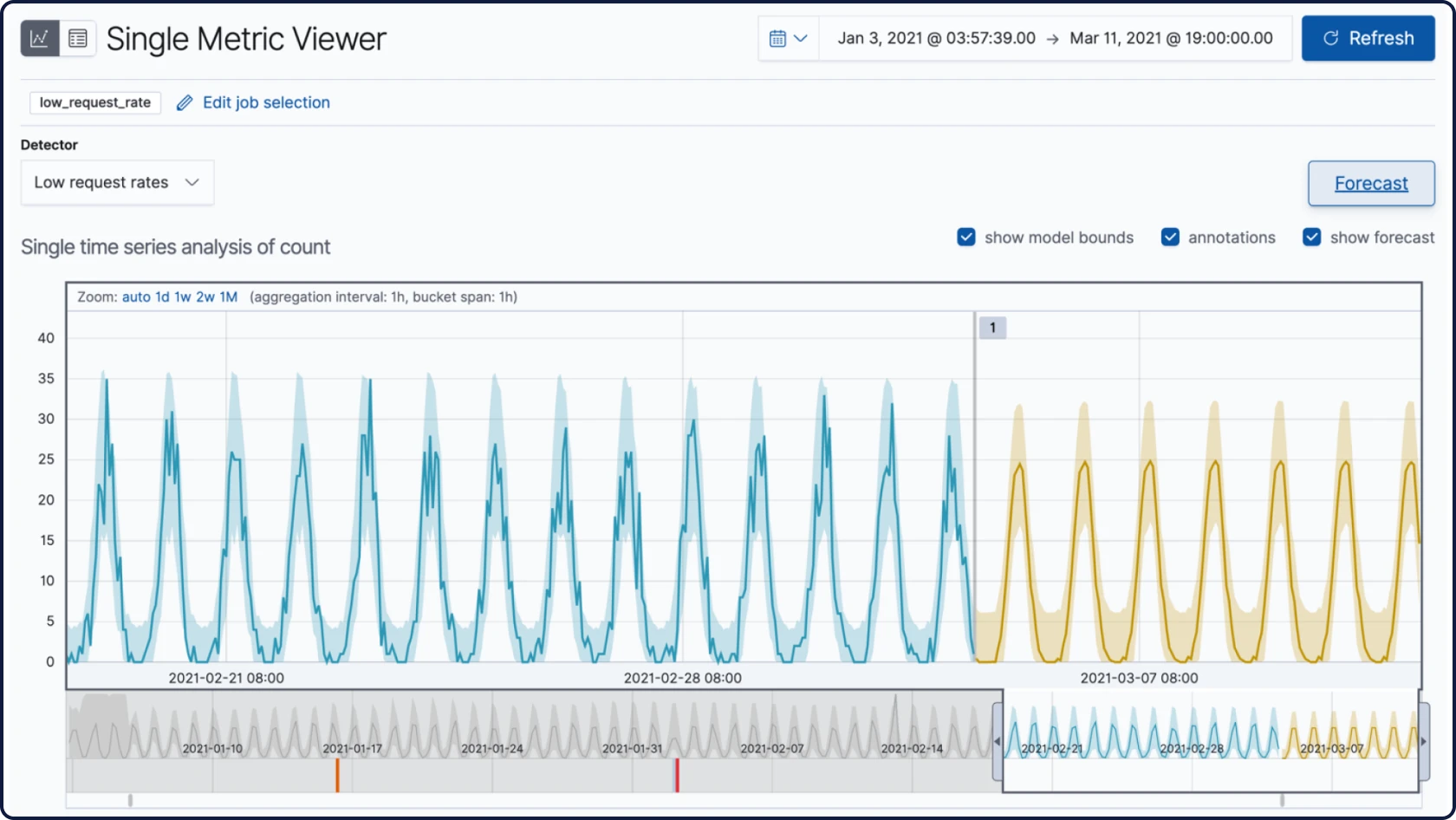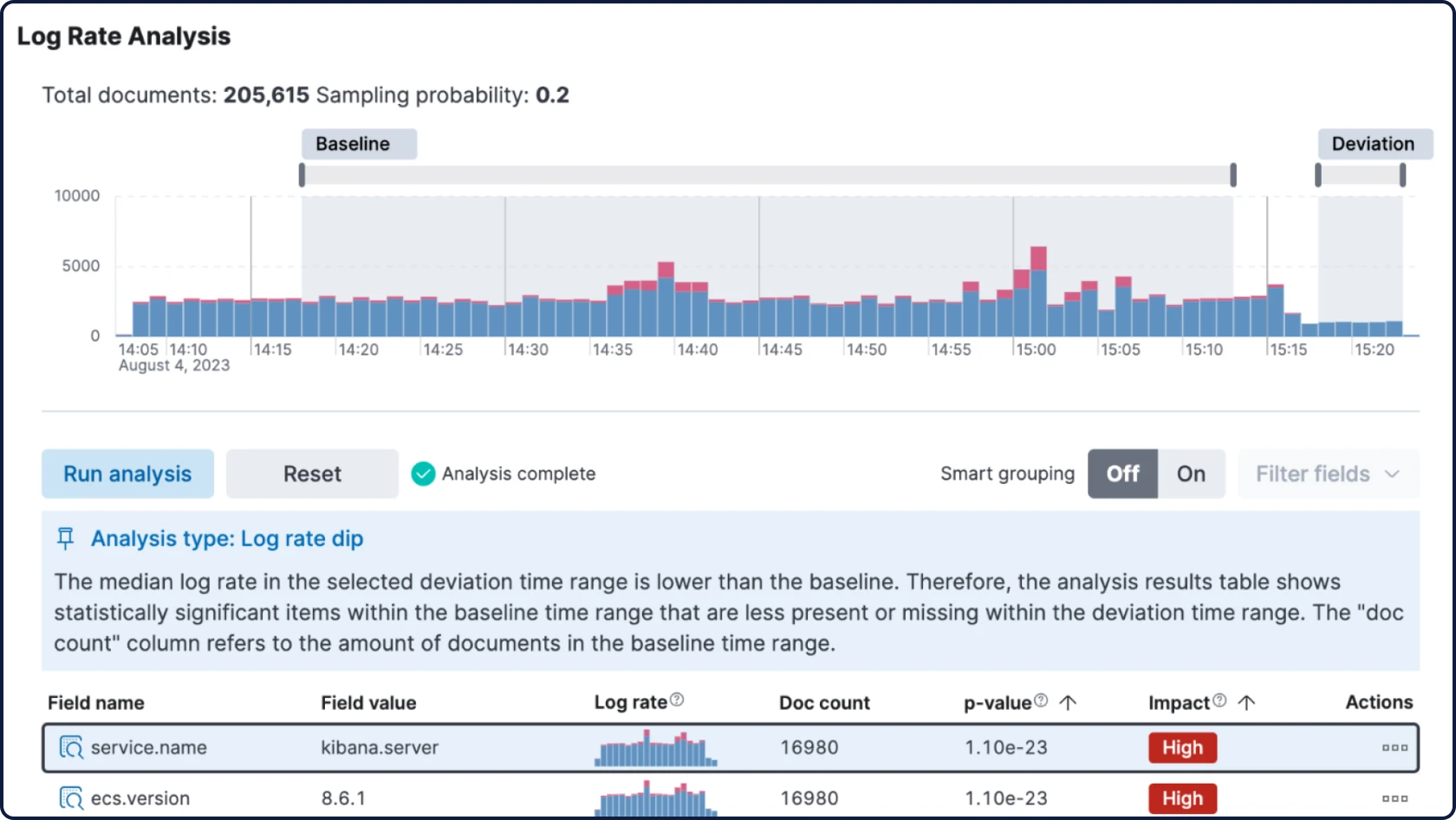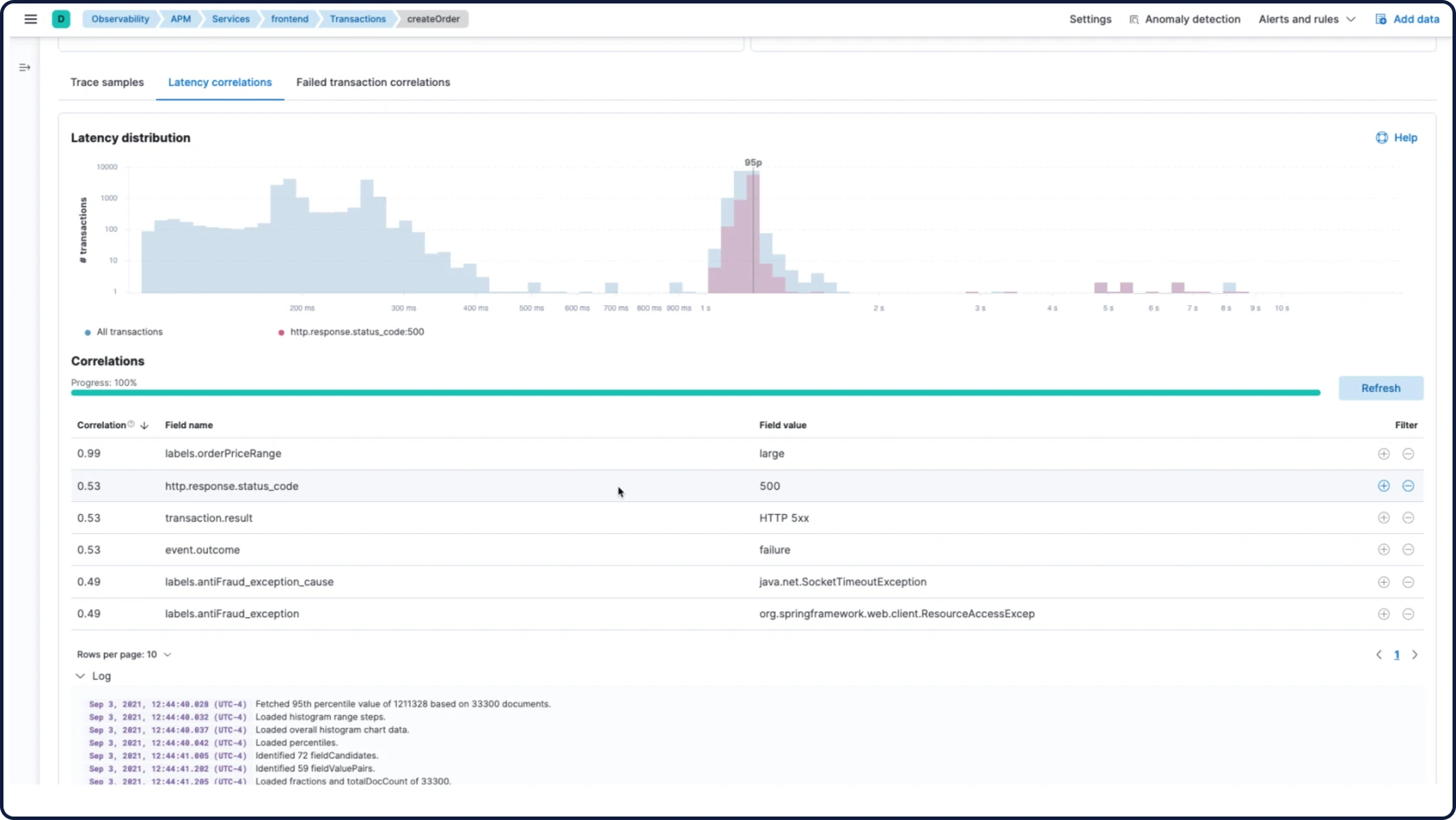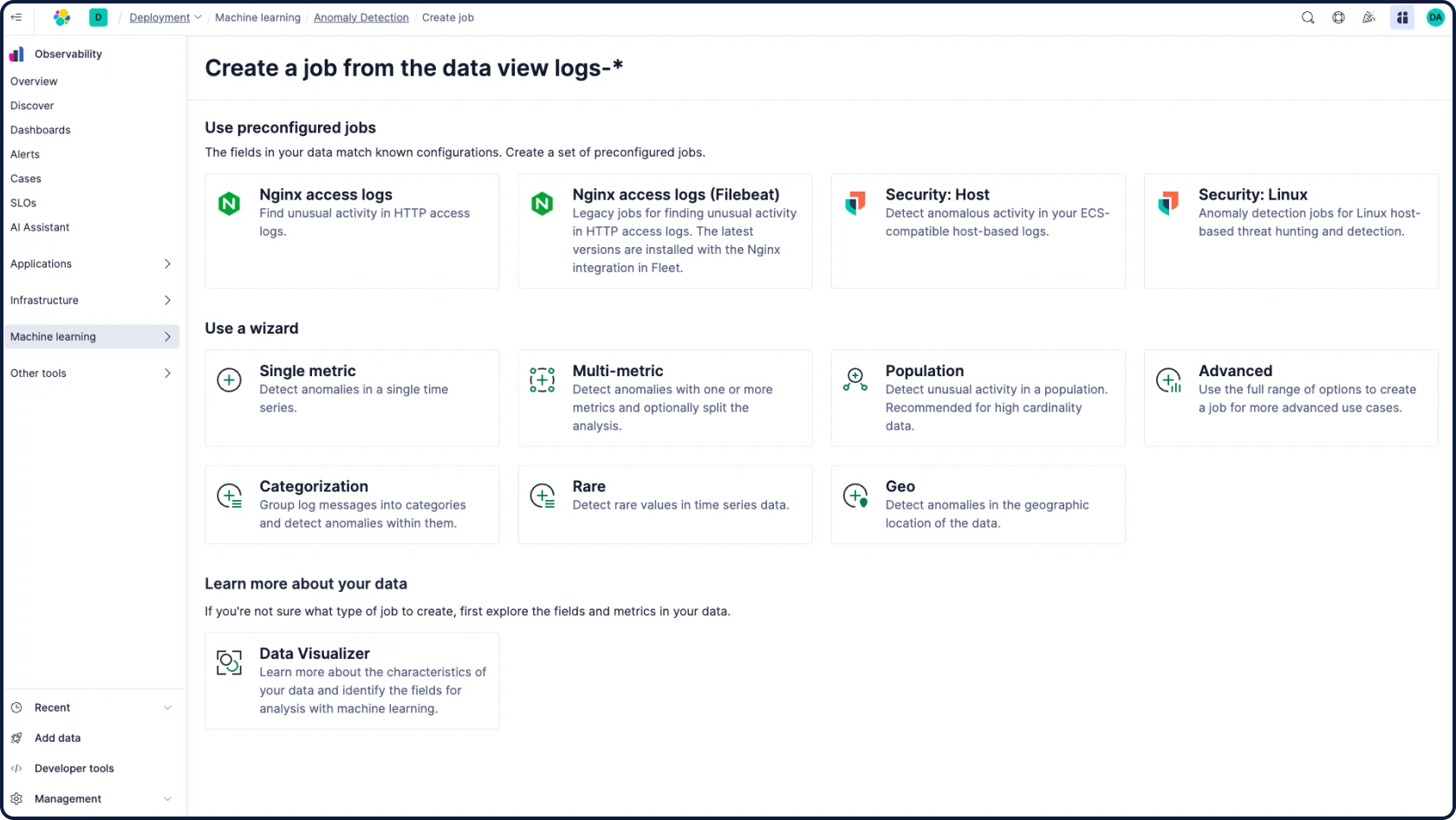AI built for SREs
Automatically detect issues, take recommended actions, and resolve problems faster with machine learning (ML) and generative AI.
Guided Demo
Your always-on teammate for ops
Ask natural-language questions and get accurate answers — grounded in your observability data, ML jobs, and internal knowledge, like runbooks or past incidents.
AI-DRIVEN FEATURES
Let AI handle the toil
Elastic ingests data from anywhere and automatically surfaces patterns, highlights anomalies, and pinpoints spikes — so you get answers, not overload.
- Elastic AI Assistant analyzes your observability data, explains issues, and surfaces the most relevant next steps based on your internal knowledgebases and runbooks through RAG.
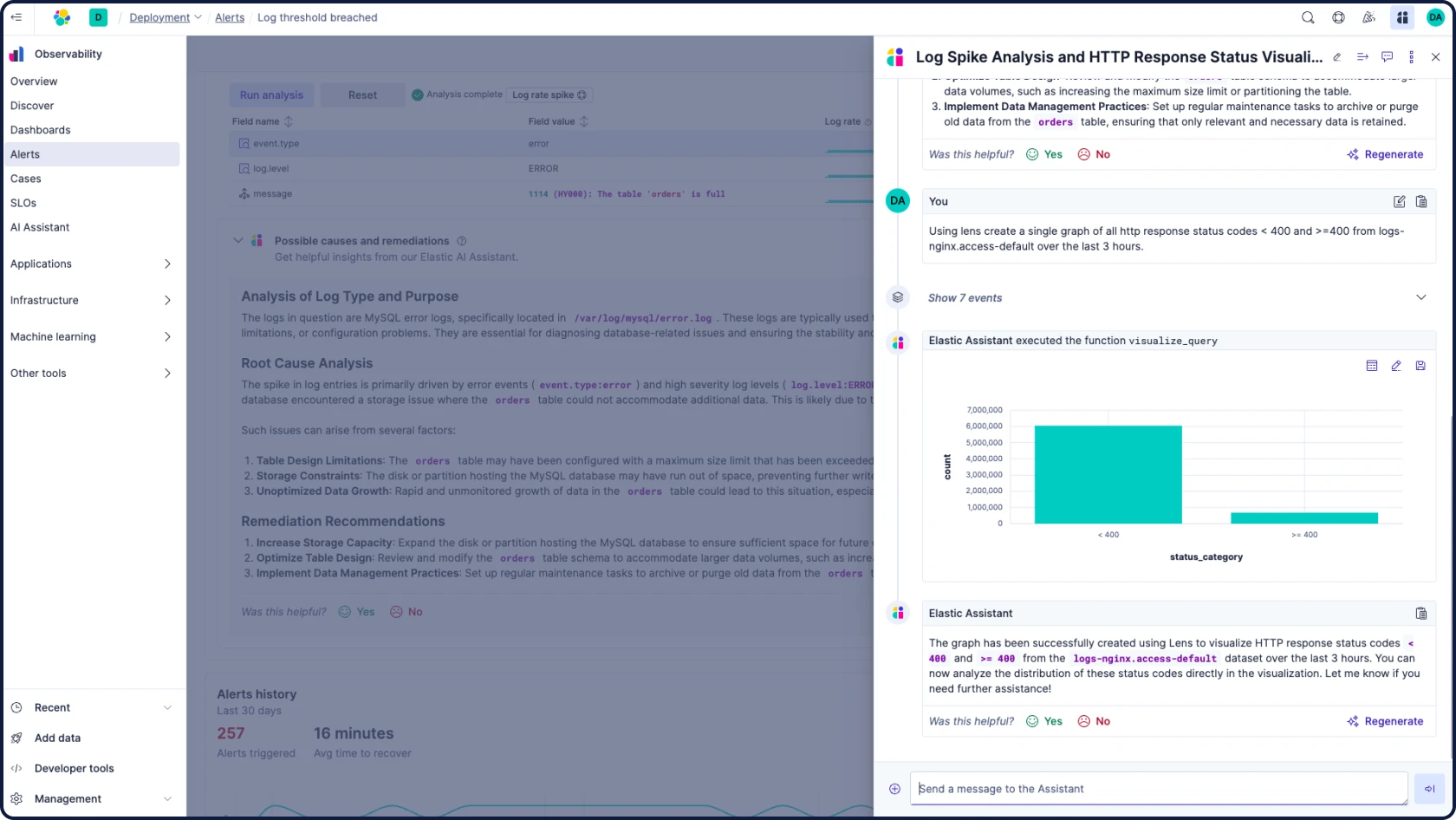

See why companies like yours choose Elastic Observability
From root cause to resolution, accelerated by AI.
Customer spotlight

Dish Media uses Elastic to spot anomalies in real time, cut resolution times from hours to minutes, and give developers instant access to the data they need — all from one unified view.
Customer spotlight

Elastic AI Assistant helped Hexaware boost team efficiency by 50% with teams now able to generate custom charts in minutes, not hours. With Elastic machine learning, false positive alerts dropped by 96%.
Customer spotlight

Informatica applies Elastic's built-in machine learning across database, network, and Kubernetes logs to proactively detect anomalies and resolve issues faster — while reducing observability and security costs by 50%.





